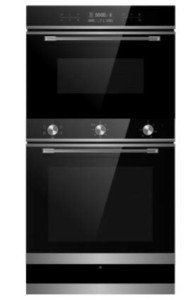bulit-in ovens of Built-In Ovens: A Seamless Approach to Modern Cooking
In modern kitchen areas, where style aesthetic appeals mix seamlessly with performance, one device stands out as a true video game changer: the built-in oven. As property owners and chefs alike continue to seek innovative solutions that improve their cooking experience, built-in ovens have actually ended up being increasingly popular. This article checks out the advantages, considerations, and patterns surrounding built-in ovens, highlighting why they are an important feature in contemporary cooking areas.
What is a Built-In Oven?
A built-in oven is a kitchen area appliance developed to be integrated into the cabinets of a kitchen instead of standing alone. Unlike standard freestanding ovens, which can be moved and positioned anywhere, built-in ovens come in various styles and sizes to fit particularly within designated spaces. Readily available in single or double configurations, these ovens offer a structured appearance that complements contemporary cooking area designs.
Benefits of Built-In Ovens
1. Space-Saving Design
One of the most attractive advantages of built-in ovens is their space-saving style. By incorporating the oven into cabinetry, you can free up valuable counter and floor area. This is especially beneficial in smaller kitchens, where maximizing space is important. Built-in ovens can be installed at eye level, making them more accessible and lowering the need to bend down.
2. Aesthetic Appeal
Built-in ovens add to a smooth and cohesive kitchen design. Available in different finishes-- such as stainless-steel, black, white, and custom cabinets-- they can mix flawlessly into the overall design. This aesthetic appeal improves the kitchen's visual harmony and elevates the area, creating a contemporary and sophisticated atmosphere.
3. Enhanced Functionality
Many built-in ovens come geared up with innovative cooking technologies, such as convection cooking, steam ovens, and clever features. These improvements permit versatile cooking options, making it easier to achieve professional-level outcomes in the house. Smart built-in ovens can even link to Wi-Fi, enabling users to manage the oven from another location, get notices, and gain access to a range of cooking programs and recipes.
4. Improved Ventilation
Since built-in ovens can be integrated with cooking area hoods and ventilation systems, they can help keep much better air quality and decrease cooking odors. This is especially significant for those who love to cook with aromatic spices and ingredients, as an effective ventilation system can keep the kitchen comfy and inviting.
5. Customization Options
Built-in ovens offer a wide variety of personalization alternatives to suit private cooking designs and requirements. From professional-grade devices with numerous cooking modes to compact styles for smaller sized kitchen areas, property owners can choose the oven that fits their particular requirements. Numerous makers likewise provide customizable front panels, permitting you to match the oven's look to your kitchen cabinetry for a genuinely combined look.
Considerations When Choosing a Built-In Oven
While built-in ovens have lots of advantages, there are necessary factors to consider to keep in mind before buying:
1. Rate
Built-in ovens generally come with a greater price than their freestanding equivalents due to their design and setup requirements. It's crucial to factor in both the expense of the oven and any extra expenses connected to cabinetry adjustments or setup.
2. Installation Requirements
Installing a built-in oven typically requires professional support, particularly if you need to customize existing cabinetry. Guarantee that you consider any costs associated with installation, including labor and potential cabinets modifications.

3. Size and Dimensions
Before buying a built-in oven, measure the designated space precisely to guarantee a proper fit. Built-in ovens come in different sizes and configurations, so picking one that lines up with your requirements and cooking area design is vital.
4. Way of life and Usage
Consider your cooking routines and requires when picking a built-in oven. If you frequently host large gatherings, a double oven may be more useful. On the other hand, if you have a compact kitchen area, a single-wall oven might suffice.
Trends in Built-In Ovens
The cooking area home appliance market is continually progressing, and built-in ovens are not exempt from emerging patterns. Some present trends consist of:
Smart Technology Integration: With the rise of clever home technology, built-in ovens now often feature connection choices. This permits users to keep track of cooking development and adjust settings by means of mobile apps.
Energy Efficiency: As sustainability becomes a priority, lots of makers are purchasing energy-efficient built-in ovens that minimize energy intake while maintaining performance.
Multi-functional Designs: Built-in ovens now use functions such as air frying, sluggish cooking, and steaming, providing versatility that satisfies a vast array of cooking techniques.
Conclusion
Built-in ovens unquestionably represent a perfect blend of design, function, and convenience in today's cooking areas. As more homeowners go with this modern-day option, the focus shifts to developing a cooking space that is as visually pleasing as it is practical. Whether you are building a new home or renovating your kitchen, considering a built-in oven might raise your cooking experience and transform your cooking area into a trendy and practical sanctuary. With an array of options readily available and ongoing developments in innovation, built-in ovens remain a standout option for both newbie cooks and cooking enthusiasts alike.
